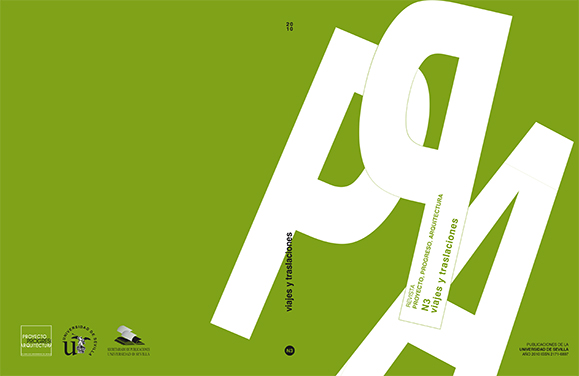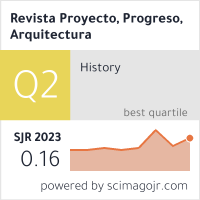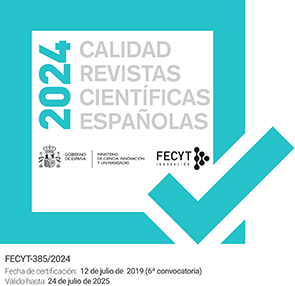SOBRE LO OBJETIVO, LO SUBJETIVO Y LO CAPRICHOSO EN ARQUITECTURA / On the objective, the subjective and the capricious in Architecture
DOI:
https://doi.org/10.12795/ppa.2010.i3.10Palabras clave:
Contexto, memoria, lugar, arquitecturaResumen
RESUMEN: Un número nuevo de una revista debe pensar una editorial, al igual que un proyecto necesita nacer de un argumento y un primer croquis para, inicialmente, ofrecer una imagen finalista. Después guardaremos la editorial en un cajón y desarrollaremos el número de la revista. Dentro de unos meses, sacaremos ese croquis y podremos reconocer su eficacia; sufrirá algún retoque pero esperamos que aún sea válido.Un viaje comienza con un empeño, un destino o una finalidad. Esta revista se ofrece en cada número con un carácter poliédrico acotando faceta a faceta, la definición de Arquitectura. Siempre que hablamos de ella intentamos conocerla, delimitarla y hay quien piensa que en su anatomía puede encerrarse el secreto de algo que es inaprensible. Paso a paso nos acercamos a su conocimiento lentamente, gracias a un esfuerzo parecido al del trabajo de Sísifo. Lo más acertado sería pensar que nuestro acercamiento es parecido al recorrido de una cinta de Moebius y aunque consigamos agotar el recorrido, siempre seremos conscientes de la breve e inasible distancia existente en el mismo punto de cada lado de la cinta. Este viaje que muchos quieren entender como absurdo, es el viaje de lo subjetivo, de aquello que nos permite acercarnos a las ideas para conocerlas poco a poco, lentamente, frente al eficaz conocimiento lógico, analítico, anatómico que, como el niño que desmonta los objetos, algunos investigadores intentan aplicar, desmontando los edificios, pensando que dentro están las ideas. No obstante todos se ven obligados a reconocer que ese trabajo sí que es absurdo porque nos lleva a la nada, quizás solo a la destrucción del pensamiento a favor del conocimiento ineficaz de la realidad.El otro conocimiento que proponemos consiste en una actitud alternativa, aquella que reivindica lo subjetivo frente a lo objetivo, para establecer como mecanismo de conocimiento una acotación del mundo que nos rodea, de los temas que nos interesan, de las ideas universales, para que cada uno establezca cortocircuitos creativos que nos permitan avanzar. Nadie debe confundir lo subjetivo con lo caprichoso, con lo absurdamente genial o lo falsamente artístico.Sucesivamente los viajes y las traslaciones que se ofrecen en este número, intentan un acercamiento que exige una actitud activa por parte del lector, de manera que si quiere pueda asumir ciertas ideas que se dan a conocer como acotación o pautas a seguir en el trabajo creativo a desarrollar por cada uno.
SUMMARY: A new issue of a magazine must contemplate an editorial, as a project needs to be born of reasoning and a first sketch as steps towards offering a final image. We will keep the editorial in a drawer ande develop the issue of the magazine. Within a few months, we will take out that sketch and be able to recognize its effectiveness; it will under go some adjustment but we hope that it is still valid.A journey begins with an undertaking, a destination and a purpose. Each issue of this journal presents a polyhedral character, demarcating the definition of Architecture facet by facet. Whenever we speak of Architecture we try to understand it, to delimit it and there are those who think that the secret of something unknowable could be enclosed within its anatomy. Step by step we slowly approach its understanding, thanks to an effort similar to that made by Sisyphus. It would be close to think of our approach as similar to the route of a Möbius strip, and although we can complete the route, we will always be conscious of the short and intangible distance existing at the same point on each side of the strip. This journey, which many want to understand as absurd, is the journey of the subjective, of that which allows us to approach ideas to understand them little by little, slowly, as opposed to the effective logical, analytical, anatomical knowledge that some researchers try to apply, like the child who takes things apart, disassembling the buildings thinking that the ideas are within. Despite all, they are forced to recognize that this work is absurd because it leads us to nothing, perhaps only to the destruction of thought in favour of the ineffective knowledge of the reality.The other understanding that we propose consists of an alternative attitude, that which restores the subjective over the objective, to take note of the world that surrounds us, of the subjects that interest us, of universal ideas in order to establish a mechanism of knowledge, so that each one establishes creative short circuits that allow us to advance. Nobody must confuse the subjective with the capricious, with the absurdly brilliant or falsely artistic.Successively, the journeys and the evolution of architectural ideas offered in this issue attempt an approach that demands an active atitude on the part of the reader so that, if they wish, they can assume certain ideas that may arise as references or guidelines to follow in their creative work.
Descargas
Descargas
Publicado
Cómo citar
Número
Sección
Licencia
Las ediciones impresa y electrónica de esta Revista son editadas por el Secretariado de Publicaciones de la Universidad de Sevilla, siendo necesario citar la procedencia en cualquier reproducción parcial o total.
Salvo indicación contraria, todos los contenidos de la edición electrónica se distribuyen bajo una licencia de uso y distribución “Creative Commons Atribución-NoComercial-SinDerivar 4.0 Internacional” ![]() . Puede consultar desde aquí la versión informativa y el texto legal de la licencia. Esta circunstancia ha de hacerse constar expresamente de esta forma cuando sea necesario.
. Puede consultar desde aquí la versión informativa y el texto legal de la licencia. Esta circunstancia ha de hacerse constar expresamente de esta forma cuando sea necesario.
Los autores/as que publiquen en esta revista aceptan las siguientes condiciones:
- Los autores/as conservan los derechos de autor y ceden a la revista el derecho de la primera publicación, con el trabajo registrado con la licencia de atribución de Creative Commons, que permite a terceros utilizar lo publicado siempre que mencionen la autoría del trabajo y a la primera publicación en esta revista.
- Los autores/as pueden realizar otros acuerdos contractuales independientes y adicionales para la distribución no exclusiva de la versión del artículo publicado en esta revista (p. ej., incluirlo en un repositorio institucional o publicarlo en un libro) siempre que indiquen claramente que el trabajo se publicó por primera vez en esta revista.
- Se permite y recomienda a los autores/as a publicar su trabajo en Internet (por ejemplo en páginas institucionales o personales) antes y durante el proceso de revisión y publicación, ya que puede conducir a intercambios productivos y a una mayor y más rápida difusión del trabajo publicado (vea The Effect of Open Access).









